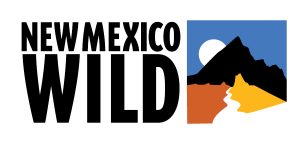
Contact: Mark Allison, mark@nmwild.org
Albuquerque, NM (August 10, 2020)– The United States Forest Service (USFS) missed the mark when issuing revised Land Management Plans in the Carson, Cibola, and Santa Fe National Forests. The new Land Management Plans will take effect in August and will likely guide forest management for the next 20 years. The previous forest plans desperately needed modernization to meet the challenges we face today, including climate change, habitat loss, and water scarcity.
We commend USFS for revising and addressing some issues in the plans, which had been in effect for over 30 years. We are gratified that the Santa Fe National Forest, for example, recognized the Caja del Rio as an important ecological and cultural landscape.
New Mexico Wild thanks its members and partners for their robust participation by contributing time, conducting wilderness inventories, and submitting public comments during the USFS’s multi-year task of developing new forest plans.
Throughout the planning process, and based on rigorous research and on-the-ground assessments, New Mexico Wild advocated that roadless, wilderness quality lands be included as Recommended Wilderness areas and that free flowing and outstandingly remarkable river segments be determined eligible for Wild and Scenic River designations. These are important administrative protections and would obligate the Forests to manage these increasingly rare places for their wilderness qualities.
Thanks to the hard work and advocacy for our members and ally organizations, USFS did include new Recommended Wilderness Areas and Eligible Wild and Scenic Rivers in their updated forest plans, including the following:
Carson
- Six areas (9,295 acres) recommended for inclusion in the National Wilderness Preservation System: (1) Lobo, (2) Huckaby, (3) Toltec, (4) Rudy, (5) Esther Garcia, and (6) Ash Mountain.
- Identification of 51 river segments (170.4 miles) eligible for inclusion in the Wild and Scenic Rivers System.
Cibola
- Five areas (14,900 acres) recommended for inclusion in the National Wilderness Preservation System, including four expansion areas to the existing Apache Kid Wilderness and one expansion area to the existing Manzano Wilderness.
- Identification of seven river segments (24.2 miles) eligible for inclusion in the National Wild and Scenic Rivers System.
Santa Fe
- Five areas (23,845 acres) recommended for inclusion in the National Wilderness Preservation System: (1) Dark Canyon Wilderness Addition; (2) White Rock Wilderness Addition; (3) Thompson Peak Wilderness Addition; (4) Enchanted Lakes Wilderness Addition; and (5) Grace Tract Wilderness Addition.
- Identification of 12 river segments (74 miles) eligible for inclusion in the Wild and Scenic Rivers System.
Unfortunately, these encompass only a fraction of the special places that should have been included in the forest plans. The Carson, Cibola, and Santa Fe Forests determined that collectively 812,080 acres of its lands had wilderness characteristics and met the size and roadless requirement for wilderness designation. Of the vast areas that qualified, less than 6% (48,040 acres) was recommended for wilderness designation in the current plans.
USFS failed to take full advantage of this opportunity to prioritize the conservation of lands with high-quality wilderness characteristics and rivers with wild, scenic, and recreational values. An example where USFS came up short is the Panther Canyon area in the San Mateo Mountains, one of the most remote landscapes that can be explored in the Cibola National Forest. With a total of 28,917 acres, this area provides exceptional scenery and remarkable hiking, backpacking, hunting and other recreational opportunities for those seeking seclusion and challenge. The area is rich with wildlife, including mountain lions and black bear, and contains multiple springs in the valley bottoms.
Failing to conserve areas like Panther Canyon could have negative consequences. Undeveloped natural lands provide numerous ecological benefits and enhance the ability of the forest to adapt to climate change. They contribute to biodiversity, enhance the ability of species to persist, facilitate habitat connectivity, and provide high quality water, soil, and air. The National Forests missed an opportunity to secure these benefits over the lifespan of the plans.
Designated Wilderness is the gold standard of conservation and provides the highest level of permanent protection for our nation’s public lands. Only Congress can create designated Wilderness. New Mexico currently has 1,981,947 acres of formal Wilderness Areas, or approximately three percent of New Mexico’s total land area.
“We appreciate the National Forests’ inclusion of some new Recommended Wilderness Areas and Eligible Wild and Scenic Rivers,” said Mark Allison, Executive Director of New Mexico Wild, “however we are deeply disappointed by the disconnect between the acreage actually identified as high-quality wilderness character lands and the scant acreage that will ultimately be managed for those values. While there are elements of the plans to celebrate, these plans make a devastating decision to leave out the vast majority of wild roadless areas and free flowing rivers from desperately needed administrative protections. New Mexico Wild looks forward to continuing to work with the agency to make sure that wildness as a value worth conserving is not lost, while we pursue federal legislation to permanently protect deserving wild places.”

